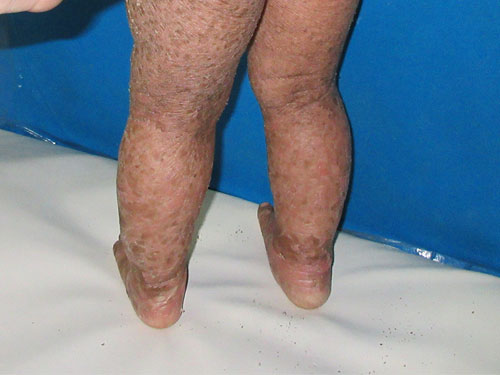

#X LINKED ICHTHYOSIS FREE#
His lab results were all normal (cholesterol, TG, HDL, LDL, FSH, LH, TSH, ACTH, vitamin A, free retinol, and plac Lp PLA2) except for human growth hormone, which was elevated (1.6 ng/ml normal range 0.01–0.97 ng/ml). There was no history of seizures EEG was not performed due to lack of cooperation. Of note, he had a history of asthma and was being treated with budesonide 0.5 mg/2 mL suspension and montelukast 4 mg daily. He was also treated for insomnia with guanfacine 0.5 mg at night. Therefore, his Adderall XR was increased to 20 mg daily, but he became weepy and emotional hence the dose was lowered back to 10 mg daily, but 7 months later the dose had to be increased back to 15 mg daily due to his persistent symptoms of ADHD. However, he was fidgety, could not wait his turn, was wandering about, was talking excessively in Spanish, and was interrupting his parents at times. He was able to answer questions about his name, age, and what he liked, but there was a lack of reciprocity and eye contact. There were no corneal opacities or preauricular scales. On exam, he was found to have a high anterior hairline, a triangular face, a short chin, widely spaced eyes, prominent nasal bridge, and conical teeth (Figure 1).

He started participating more in group activities. He was started on amphetamine-dextroamphetamine ER 10 mg daily, which improved his behavior both at home and at school. He was diagnosed with ADHD and mild autism based on the DSM V criteria by a child psychologist six months prior to the neurology visit. He attended special education at a preschool level and he could count up to 100.
#X LINKED ICHTHYOSIS TV#
He adhered to routines for example, when his father would change his favorite TV channel he would become very angry. During early childhood he did not want to be around other children. He weighed 6 lbs 10 oz (20th percentile) at birth, walked at 14 months, and said “mama” and “papa” at 8-9 months. Otherwise, the pregnancy history and delivery were normal. His mother remembered being told that he might have intellectual disability based on blood tests and an amniocentesis however, these test results were not available. Case PresentationĪ 5-year-old boy (43 inches, 50th percentile, and 42 lbs, 50th percentile) presented to Parkside Medical Group (Upland, CA) for a neurological evaluation. We present a case of XLI with ADHD and mild autism due to a recurrent ~2 Mb deletion which spared the NLGN4 gene.

While patients with mutations involving solely the STS gene or the recurrent ~2 Mb deletion can present with attention-deficit hyperactivity disorder (ADHD), those with larger deletions including neighboring genes such as neuroligin 4 (NLGN4) may present with autism in addition to ADHD.
#X LINKED ICHTHYOSIS SKIN#
X-linked ichthyosis (XLI) is an X-linked recessive disorder with a prevalence of approximately 1 : 4,000, demonstrating dry, scaly skin due to a deficiency of the enzyme steroid sulfatase. Such neurological manifestations of XLI warrant attention as practical targets of clinical management. However, our patient presented with mild autism in addition to ADHD despite having only the recurrent deletion without loss of NLGN4. Patients with mutations involving solely the STS gene or the recurrent ~2 Mb deletion may present with ADHD, whereas those with larger deletions including the NLGN4 gene can present with both ADHD and autism. Further exam revealed dry, scaly skin on his abdomen and pretibial areas. Chromosomal microarray demonstrated a 1.7 Mb deletion at Xp22.31, which was consistent with X-linked ichthyosis (XLI). A 5-year-old boy presented with mild autism and attention-deficit hyperactivity disorder (ADHD).


 0 kommentar(er)
0 kommentar(er)
